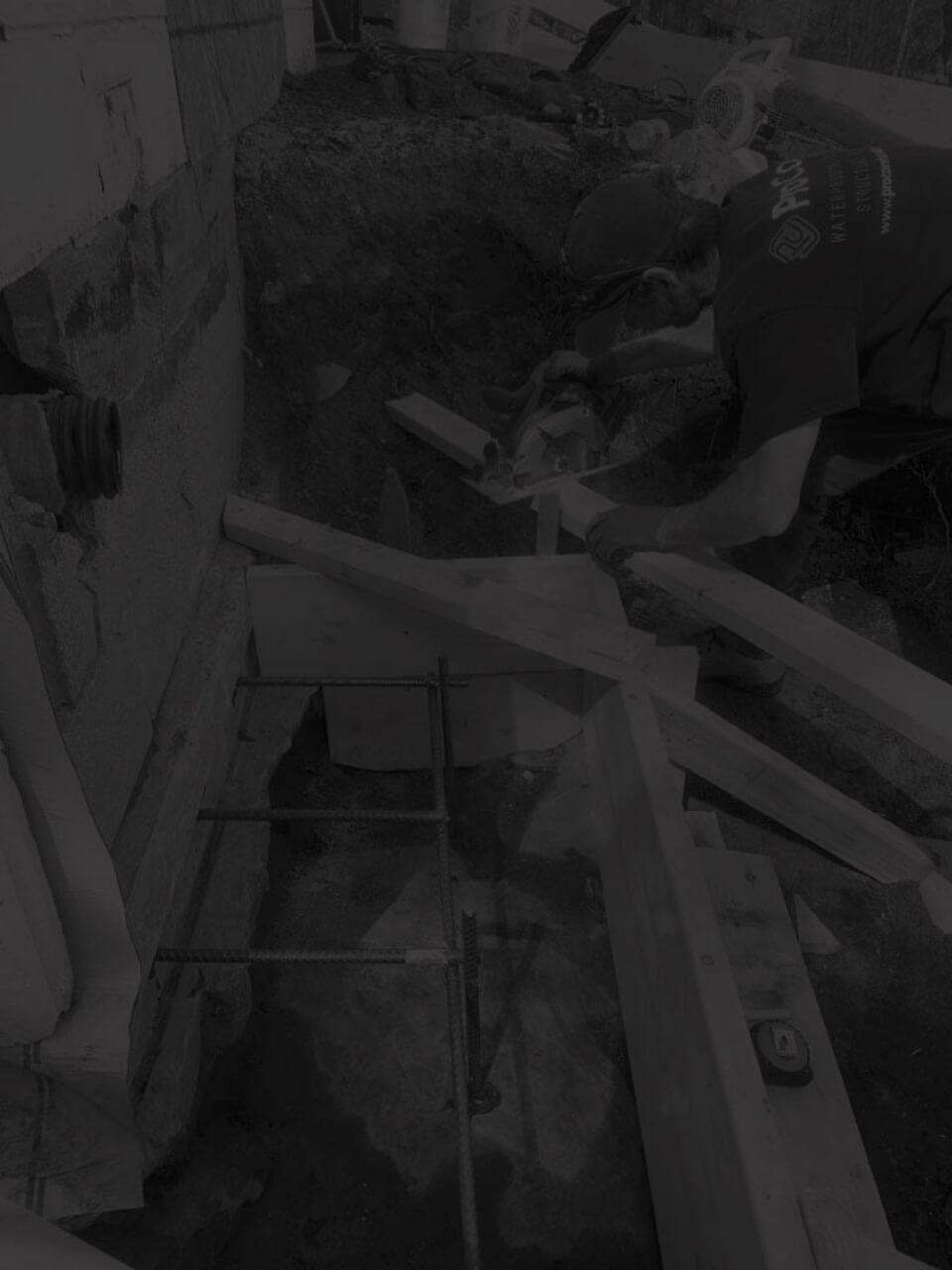Foundation cracks are a common issue for homeowners, but not all cracks are the same. This homeowner’s guide to repairing cracks in concrete foundations explains the types of cracks, what causes them, and the best ways to fix them. Rather than go the DIY route, proper repair protects your home’s integrity and prevents more costly problems down the line.
Types of Foundation Cracks
Figuring out what kind of cracks are present in your foundation wall is the first step.
- Hairline cracks: These are minor cracks often caused by natural settling or concrete shrinkage. They rarely compromise structural integrity, but can let moisture in.
- Vertical cracks: Typically occur along the wall’s vertical joints. Small vertical cracks may result from minor settlement, while wider ones may indicate structural concerns.
- Horizontal cracks: These are more serious and often caused by horizontal loading or soil movement beneath the foundation. Horizontal cracks can threaten a foundation’s integrity and require professional evaluation.
- Diagonal cracks: These often appear at corners or near windows. Diagonal cracks can signal settlement issues and sometimes indicate structural cracks.
What Are the Common Causes?
Cracks develop in concrete structures for several reasons.
- Soil movement: Expansion and contraction of soil can create settlement cracks. Dense soil may prevent excessive movement, but loose soil or poor compaction can lead to foundation failure.
- Concrete shrinkage: As concrete cures, shrinkage cracks may form. These cracks are usually minor and do not threaten the home’s integrity.
- Freeze-thaw cycles: Water that enters small cracks can expand during freezing, creating larger cracks.
- Hydrostatic pressure: Water buildup around a concrete footing or block foundation can push against walls, leading to horizontal or diagonal cracks.
- Structural issues: Poorly reinforced concrete or original concrete defects can lead to structural cracks over time.
Repair Methods
The best repair method depends on the type and severity of the crack. ProCore Foundations uses professional repair techniques tailored to each situation. Common repair methods include:
- Epoxy injection: Ideal for structural cracks in reinforced concrete. The epoxy bonds the crack and restores strength.
- Polyurethane foam injection: Fills cracks and stops water infiltration. This chemical reaction expands to fill gaps, offering a long-lasting repair.
- Hydraulic cement: Works to stop active water leaks in concrete structures or basement walls.
- French drain system: Redirects water away from the foundation to reduce hydrostatic pressure and moisture issues.
Before starting any repairs, a thorough inspection is important. It’ll help identify warning signs, loose concrete, and other foundation problems that could lead to future cracks or foundation failure.
Inside vs Outside Repairs
Homeowners often ask: Is it better to repair foundation cracks from inside or outside?
- Inside repairs: Easier to access and less expensive, suitable for hairline cracks, shrinkage cracks, or minor water intrusion.
- Outside repairs: Recommended when soil movement, water infiltration, or extensive repairs are involved. Excavating around the foundation wall allows professionals to address the source of the problem, protecting your home’s integrity for the long term.
Timing Your Repairs

What’s the best time of year for foundation repair? Spring and fall are ideal. Concrete cures best when temperatures are stable. Avoid extreme heat or freezing conditions, which can affect the repair process and the foundation’s integrity.
Warning Signs to Watch For
Some cracks signal more serious structural issues:
- Wide horizontal cracks or cracks under load-bearing walls
- Cracks that grow quickly over time
- Visible cracks in the basement wall or concrete footing
- Trip hazards caused by uneven surfaces from foundation movement
We offer a free inspection and estimate in Ottawa to spot these warning signs early and recommend the best course for professional repair.
Preventing Future Cracks
While some cracks result from natural settling, homeowners can take steps to reduce future foundation cracks:
- Maintain a dense soil layer around the home to limit soil expansion
- Install a French drain system to manage water and hydrostatic pressure
- Repair minor cracks promptly to prevent further damage and moisture infiltration
FAQs
What is the best method for foundation crack repair?
Is it better to repair foundation cracks from inside or outside?
What does a concerning foundation crack look like?
What’s the best time of year for foundation repair?
Preserve Your Home’s Integrity
Repairing cracks in concrete foundations protects your home’s structural integrity and prevents future foundation problems. With proper inspection, repair methods, and maintenance, homeowners can address minor cracks before they turn into major issues.

